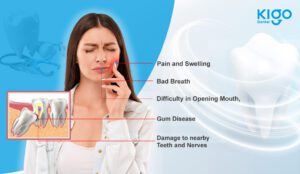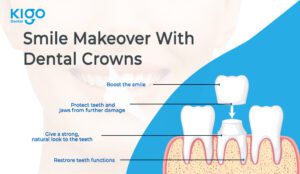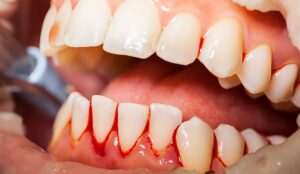Tooth Removal
Uncompromised quality
We use quintessential quality materials and stringent sterilisation protocols to ensure that you don't have any medical or dental complications in future.
Anxiety Free Dentistry
Experience the treatment process in a pleasant atmosphere from handpicked expert clinicians, with unparalleled clinical etiquette, to ensure exemplary health care.
Best in class outcomes
We strive our best, so that we can keep our promise of delivering the individualized smiles that we have reimagined for you with latest techniques and technologies.
"Tooth removal made easy, with our gentle touch."


Tooth removal, also known as tooth extraction, is a common dental procedure in which a damaged or decayed tooth is removed from the mouth. While the idea of having a tooth removed may seem daunting, the process is often quick, safe, and relatively painless, and can help to alleviate pain and discomfort caused by a problematic tooth.
There are many reasons why someone might need to have a tooth removed. For instance, if a tooth is severely decayed or infected, it may need to be extracted to prevent the spread of infection to other teeth or to the gums. Similarly, if a tooth is severely damaged due to trauma or injury, removal may be necessary to prevent further damage and promote healing.
In some cases, tooth removal may be necessary to make room for orthodontic treatment or to prepare for a dental implant. Additionally, wisdom teeth, which often emerge in the late teenage or early adult years, may need to be removed if they become impacted or cause pain or discomfort.
Tooth removal is typically performed under local anaesthesia, which numbs the area around the tooth, and can be completed relatively quickly, often in just a matter of minutes. While you may experience some mild discomfort or swelling in the days following the procedure, this can usually be managed with pain medication and proper care.
If you think you may need to have a tooth removed, don’t hesitate to speak to our expert sat kigo dental. We can evaluate your teeth and recommend the best course of treatment to alleviate your pain and promote better oral health.
-
- Decay: If a tooth has a large cavity or is extensively decayed, it may need to be removed to prevent the spread of infection or decay to other teeth.
- Crowding: In some cases, there may not be enough room in the mouth for all of the teeth, leading to overcrowding. In these cases, removing one or more teeth can help improve the alignment of the remaining teeth.
- Gum disease: If gum disease progresses to the point where the supporting tissue and bone around the tooth are damaged, the tooth may need to be removed.
- Impacted teeth: Wisdom teeth, or third molars, often do not have enough room to emerge and can become impacted, leading to pain, swelling, and infection. In these cases, removal may be necessary to prevent further complications.
- Trauma or injury: A tooth that has been broken or knocked out due to injury may need to be removed, especially if it cannot be repaired.
- Preparation for orthodontic treatment: In some cases, removing one or more teeth may be necessary to create more space for orthodontic treatment, such as braces or Invisalign.
- Preparation for dentures or bridges: In some cases, removing one or more teeth may be necessary to prepare for the placement of dentures or bridges.
- Simple extraction: This is a straightforward procedure that is used to remove a visible tooth that has erupted from the gum line. The dentist or oral surgeon will use a tool called an elevator to loosen the tooth and a pair of forceps to remove it.
- Surgical extraction: This type of extraction is used for teeth that are not visible or partially visible in the mouth, such as impacted wisdom teeth. During a surgical extraction, the dentist or oral surgeon will make an incision in the gum tissue to access the tooth and remove it in pieces if necessary.
- Partial bony impaction: This procedure is used to remove impacted wisdom teeth that have partially erupted from the gum line. The dentist or oral surgeon will remove part of the gum tissue and bone to access the tooth and remove it in pieces.
- Complete bony impaction: This procedure is used to remove impacted wisdom teeth that are fully embedded in the jawbone. The dentist or oral surgeon will make an incision in the gum tissue and remove part of the jawbone to access the tooth and remove it in pieces.
- Root removal: This procedure is used to remove the entire tooth, including the root. It may be necessary in cases where a tooth has been broken off at the gum line or in cases of advanced decay or gum disease.
- Consultation: The dentist will examine the tooth and take X-rays to determine if an extraction is necessary and to plan the procedure.
- Anesthesia: To minimize discomfort, the dentist will numb the area around the tooth with local anesthesia, or in some cases, the patient may be given general anesthesia.
- Loosening the tooth: The dentist will use a dental instrument called an elevator to loosen the tooth from its socket in the jawbone.
- Removal of the tooth: The dentist will use forceps to grasp the tooth and gently rock it back and forth to remove it from the socket.
- Control of bleeding: The dentist will place a gauze pad over the socket and have the patient bite down to control any bleeding.
- Aftercare: The dentist will provide instructions on how to care for the socket and manage any discomfort following the extraction
- Discuss medical history: Provide your dentist or oral surgeon with a complete medical history, including any medications you are taking, any allergies you have, and any medical conditions you have.
- Stop certain medications: If you are taking blood-thinning medications, such as aspirin, your dentist or oral surgeon may instruct you to stop taking them before the extraction to minimize the risk of bleeding.
- Arrange for transportation: If you are having general anesthesia, you will need to arrange for someone to drive you home after the procedure.
- Eat a light meal: Eat a light meal before the procedure, but avoid eating anything for at least six hours before the procedure if general anesthesia is being used.
- Wear comfortable clothing: Wear comfortable clothing to the appointment, and be sure to remove any dentures, bridges, or other dental appliances before the procedure.
- Follow post-operative instructions: Your dentist or oral surgeon will provide specific post-operative instructions, such as not smoking or using straws, which can dislodge the blood clot and delay healing.
- Bite on a gauze pad: Bite on a gauze pad placed over the extraction site to control bleeding and promote the formation of a blood clot.
- Apply ice: Apply ice to the outside of your cheek in the area of the extraction for the first 24-48 hours to reduce swelling.
- Take pain medication: Take over-the-counter pain medication, such as ibuprofen or acetaminophen, as directed to manage discomfort.
- Avoid smoking: Do not smoke for at least 24 hours after the extraction to reduce the risk of dry socket and to promote proper healing.
- Avoid solid foods: Avoid solid foods for the first 24 hours after the extraction and then gradually return to a regular diet, avoiding crunchy or hard foods that could dislodge the blood clot.
- Brush and floss: Brush and floss your teeth as normal, being careful not to disturb the blood clot in the extraction site.
- Attend follow-up appointments: Attend any follow-up appointments with your dentist or oral surgeon as directed to monitor the healing process and to ensure proper recovery.
All of us here at Kigo Dental are committed to providing you with the best dental care available, and we do so with a smile.
Our entire staff, from receptionists to dental hygienists and assistants, is committed to providing you with the best quality dental care possible.
From the time you walk through the door and every time you revisit, you will experience this firsthand.
Kigo Dental has a team of experienced and skilled Orthodontists and other specialised dentists who specialize in providing high-quality dental care and treatments, utilizing the latest technologies and techniques to ensure the best outcomes for their patients.
FAQ's
In some cases, tooth removal can cause changes in bite, especially if the removed tooth was part of the bite surface. Your dentist or oral surgeon can discuss the potential impact of tooth removal on your bite and recommend options for managing bite changes, such as a dental appliance or orthodontic treatment.
The healing process after a tooth removal can vary depending on the individual and the type of extraction. However, it typically takes 7-10 days for a simple extraction site to heal and several months for a surgical extraction site to fully heal.
Pain after a tooth extraction is normal and can be managed with over-the-counter pain medication and cold compresses. If the pain is severe or persistent, it’s important to contact your dentist or oral surgeon for further evaluation and management.
After a tooth extraction, it’s important to follow a soft diet for the first 24-48 hours and then gradually return to a regular diet, avoiding crunchy or hard foods that could dislodge the blood clot. Your dentist or oral surgeon can provide specific instructions for eating after an extraction.
To promote proper healing after a tooth extraction, it’s important to follow all post-treatment instructions provided by your dentist or oral surgeon, such as biting on a gauze pad, taking pain medication, avoiding smoking, and avoiding solid foods. You should also attend any follow-up appointments to monitor the healing process and ensure proper recovery.
You can brush and floss normally after a tooth extraction, being careful not to disturb the blood clot in the extraction site. Your dentist or oral surgeon can provide specific instructions for brushing and flossing after an extraction.
Potential complications of tooth removal include pain, swelling, bleeding, dry socket, infection, and nerve damage. It’s important to follow all post-treatment instructions and to contact your dentist or oral surgeon if you experience any symptoms of complications after an extraction.
No, tooth removal will not affect your eyesight. There is no connection between the health of your teeth and eyes, and removing a tooth will not cause changes in your eyesight. In some cases, tooth removal can cause temporary swelling in the area surrounding the tooth, but this swelling should not affect your eyesight. If you are concerned about the potential impact of tooth removal on your eyesight or any other aspect of your health, it’s important to discuss your concerns with your dentist or oral surgeon before undergoing the procedure.
The tooth removal process itself should not hurt, as your dentist will use a local anaesthetic to numb the area. However, you may experience some discomfort or pain after the procedure, which can usually be managed with over-the-counter pain medication.
The length of the tooth removal process can vary depending on the case. In general, the procedure takes about 20 to 40 minutes, but it can take longer if the tooth is impacted or if multiple teeth are being removed.
After tooth removal, you may experience some bleeding, swelling, and discomfort in the affected area. Your dentist will provide you with specific instructions for post-operative care, which may include taking pain medication, avoiding certain foods, and keeping the area clean.
You should avoid eating or drinking anything until the anaesthesia wears off to prevent accidentally biting your tongue or cheek. After the procedure, you should stick to soft foods and avoid hard, crunchy, or spicy foods until the area has healed.
The healing process can vary depending on the case and the individual, but it typically takes about one to two weeks for the area to heal completely. During this time, you should follow your dentist’s instructions for post-operative care and avoid smoking, using straws, or engaging in any strenuous physical activity that can delay healing.
Blogs






Wisdom Teeth: Understanding the What, Why, and When
Wisdom teeth, also known as third molars, are often a source of concern for many people. They can lead to various dental issues, including wisdom






Smile Makeover with Dental Crowns: Types, Overview & cost
A smile is one of the most attractive features a person can have. It can boost your confidence, make you more approachable, and even improve






Beyond the smile: Exploring the crucial role of teeth in your overall health
Teeth are often linked to the ability to smile, eat, and express oneself. However, teeth serve many other vital purposes as well. Your teeth have






The Silent Threat: How Gum Diseases Lead to Tooth Loss
Having strong teeth and gums is a reflection of your entire well-being, not simply your appearance. Despite this, many people don’t give their gums the






The Importance of Orthodontists in Clear Aligner Treatment: Avoiding Problems and Ensuring Successful Outcomes
More and more individuals are seeking out clear aligner treatment as a way to improve their smile in a way that is both subtle and






Understanding Abnormal Dental Habits in Children and the Importance of Control
As parents and caregivers, we play a pivotal role in shaping our children’s habits and behaviors, especially when it comes to their oral health. However,






Wisdom Teeth: Understanding the What, Why, and When
Wisdom teeth, also known as third molars, are often a source of concern for many people. They can lead to various dental issues, including wisdom






Smile Makeover with Dental Crowns: Types, Overview & cost
A smile is one of the most attractive features a person can have. It can boost your confidence, make you more approachable, and even improve






Beyond the smile: Exploring the crucial role of teeth in your overall health
Teeth are often linked to the ability to smile, eat, and express oneself. However, teeth serve many other vital purposes as well. Your teeth have






The Silent Threat: How Gum Diseases Lead to Tooth Loss
Having strong teeth and gums is a reflection of your entire well-being, not simply your appearance. Despite this, many people don’t give their gums the






The Importance of Orthodontists in Clear Aligner Treatment: Avoiding Problems and Ensuring Successful Outcomes
More and more individuals are seeking out clear aligner treatment as a way to improve their smile in a way that is both subtle and






Understanding Abnormal Dental Habits in Children and the Importance of Control
As parents and caregivers, we play a pivotal role in shaping our children’s habits and behaviors, especially when it comes to their oral health. However,






Wisdom Teeth: Understanding the What, Why, and When
Wisdom teeth, also known as third molars, are often a source of concern for many people. They can lead to various dental issues, including wisdom






Smile Makeover with Dental Crowns: Types, Overview & cost
A smile is one of the most attractive features a person can have. It can boost your confidence, make you more approachable, and even improve






Beyond the smile: Exploring the crucial role of teeth in your overall health
Teeth are often linked to the ability to smile, eat, and express oneself. However, teeth serve many other vital purposes as well. Your teeth have






The Silent Threat: How Gum Diseases Lead to Tooth Loss
Having strong teeth and gums is a reflection of your entire well-being, not simply your appearance. Despite this, many people don’t give their gums the






The Importance of Orthodontists in Clear Aligner Treatment: Avoiding Problems and Ensuring Successful Outcomes
More and more individuals are seeking out clear aligner treatment as a way to improve their smile in a way that is both subtle and






Understanding Abnormal Dental Habits in Children and the Importance of Control
As parents and caregivers, we play a pivotal role in shaping our children’s habits and behaviors, especially when it comes to their oral health. However,






Wisdom Teeth: Understanding the What, Why, and When
Wisdom teeth, also known as third molars, are often a source of concern for many people. They can lead to various dental issues, including wisdom






Smile Makeover with Dental Crowns: Types, Overview & cost
A smile is one of the most attractive features a person can have. It can boost your confidence, make you more approachable, and even improve






Beyond the smile: Exploring the crucial role of teeth in your overall health
Teeth are often linked to the ability to smile, eat, and express oneself. However, teeth serve many other vital purposes as well. Your teeth have






The Silent Threat: How Gum Diseases Lead to Tooth Loss
Having strong teeth and gums is a reflection of your entire well-being, not simply your appearance. Despite this, many people don’t give their gums the






The Importance of Orthodontists in Clear Aligner Treatment: Avoiding Problems and Ensuring Successful Outcomes
More and more individuals are seeking out clear aligner treatment as a way to improve their smile in a way that is both subtle and






Understanding Abnormal Dental Habits in Children and the Importance of Control
As parents and caregivers, we play a pivotal role in shaping our children’s habits and behaviors, especially when it comes to their oral health. However,






Wisdom Teeth: Understanding the What, Why, and When
Wisdom teeth, also known as third molars, are often a source of concern for many people. They can lead to various dental issues, including wisdom






Smile Makeover with Dental Crowns: Types, Overview & cost
A smile is one of the most attractive features a person can have. It can boost your confidence, make you more approachable, and even improve






Beyond the smile: Exploring the crucial role of teeth in your overall health
Teeth are often linked to the ability to smile, eat, and express oneself. However, teeth serve many other vital purposes as well. Your teeth have






The Silent Threat: How Gum Diseases Lead to Tooth Loss
Having strong teeth and gums is a reflection of your entire well-being, not simply your appearance. Despite this, many people don’t give their gums the






The Importance of Orthodontists in Clear Aligner Treatment: Avoiding Problems and Ensuring Successful Outcomes
More and more individuals are seeking out clear aligner treatment as a way to improve their smile in a way that is both subtle and






Understanding Abnormal Dental Habits in Children and the Importance of Control
As parents and caregivers, we play a pivotal role in shaping our children’s habits and behaviors, especially when it comes to their oral health. However,
LET'S TALK
Book your Appointment
Appointment Timings: Mon-sat: 10:00 am- 8:00 pm |
Sun: 10:00 am - 1:00 pm
Contact
We would love to be a part of your Smile Reimagining Journey...
- 2nd Floor, QUBE, Plot No: 3-64/A, Kavuri Hills Rd, Jubilee Hills, Hyderabad, Telangana 500033
-
+91 9998884398
- kigodental@gmail.com
-
Mon - Sat: 10:00 am - 8:30 pm
Sun: 10:00 am - 1:00 pm